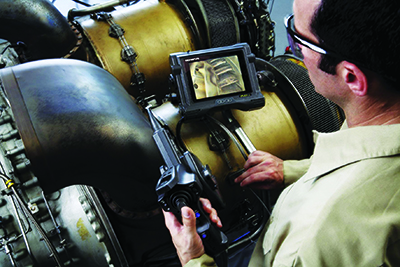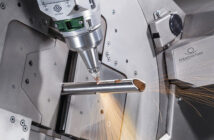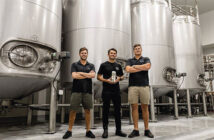The ability to inspect internal surfaces and other features of a product without causing damage is one of the key benefits offered by industrial videoscopes. Remote Visual Inspection (RVI) of materials, components and structures allow technicians to detect cracks, bubbles, and other flaws that might lead to failure or other problems with equipment in the future.
Olympus has been at the forefront of videoscope and endoscope development for many decades. This experience has given the company a major share of the world market for medical endoscopes. The two types of Remote Visual Inspection (RVI) instruments were developed from the same combination of lens and light technology.
A videoscope is an inspection instrument that allows an engineer or technician to view the components of a machine in situ or see inside confined spaces. It consists of a small camera mounted on a length of cable that can be controlled by the operator. Modern videoscopes incorporate light sources into the tip of the probe as well as motors to move the LED and lens assembly.
The camera and cable connect to a portable base unit and the images are viewed directly on a built-in monitor or plugged into a larger, separate monitor. The head of the device is carefully threaded through an opening. As the camera moves, it provides a real-time image of the environment until it reaches the target area. The technician operating the videoscope can adjust the focus and move the camera as needed to examine different features of interest.
The outside diameter of a videoscope can be extremely small – the smallest produced by Olympus is 2.4mm – which allows them to be used for activities like checking the quality of internal welds and looking inside delicate systems to determine the causes of errors. While images can be viewed in real time, data can also be recorded for later review. Technicians are able to search for faults which may have been missed on the initial pass while looking at real time video.
According to Mark Wheatley, sales specialist at Olympus, the greatest advances and improvements for videoscopes during the past two to five years have been in battery and LED technology. “Batteries are smaller and lighter so videoscopes are decreasing in size as well,” he said. “The limitations of original videoscopes were getting light into the area being inspected and the size of the power supply.”
Early videoscopes were large, bulky devices with CRT displays. Moreover, they had the restriction of needing to be plugged into a power socket, with long lengths of trailing cables. Technological developments have meant that the cost of the units has dropped significantly, with the latest MX2 model half the cost of its predecessor. This has made the instruments affordable for a wider range of customers.
Mr Wheatley says that other developments have also had an impact. “Untethering videoscopes from mains power has opened up whole new market segments. Smaller organisations, like pest control companies and business aircraft operators, can now afford to use the latest test instruments.”
Olympus has been leading the world in the development of LED technology used in RVI instruments. The company also has patented a technology called WiDER. This is a system that increases the background signal – similar to gamma correction in digital photography – allowing less light to be used and reducing flaring off surfaces and washing out of the image. “This sets us apart from our competitors,” Mr Wheatley says. “Not only can we now put a lot more light out of the end of the scope but we can use that light far more effectively.”
Olympus videoscopes have many features and functions built in to the unit which can be accessed by purchasing software codes’. These enable different measuring, recording and reporting functions to be used during inspections. The company continues its research and development to improve videoscope technology and enhance RVI functionality.
Probes for videoscopes can be up to 30 metres long. “While the standard 4mm probe is suitable for probably 90 percent of all inspection applications, Olympus is willing to work with customers to adapt or modify instruments to meet their needs,” says Mr Wheatley.
Over the years Olympus has been called on to provide solutions for some unusual situations. “One request was from the Australian Zoo in Queensland where they wanted to observe bee and insect activity in logs. Another was a requirement from a transport company to inspect gas bottles mounted to the top of its busses, but without the need for the technician to climb up.”
Olympus produces a wide range of videoscopes along with replacement parts and accessories. “For every non-destructive testing application, Olympus has a videoscope available for the job,” Mr Wheatley says. “The combination of ever smaller batteries and better, brighter LEDs has changed the face of scopes altogether.”





























































































